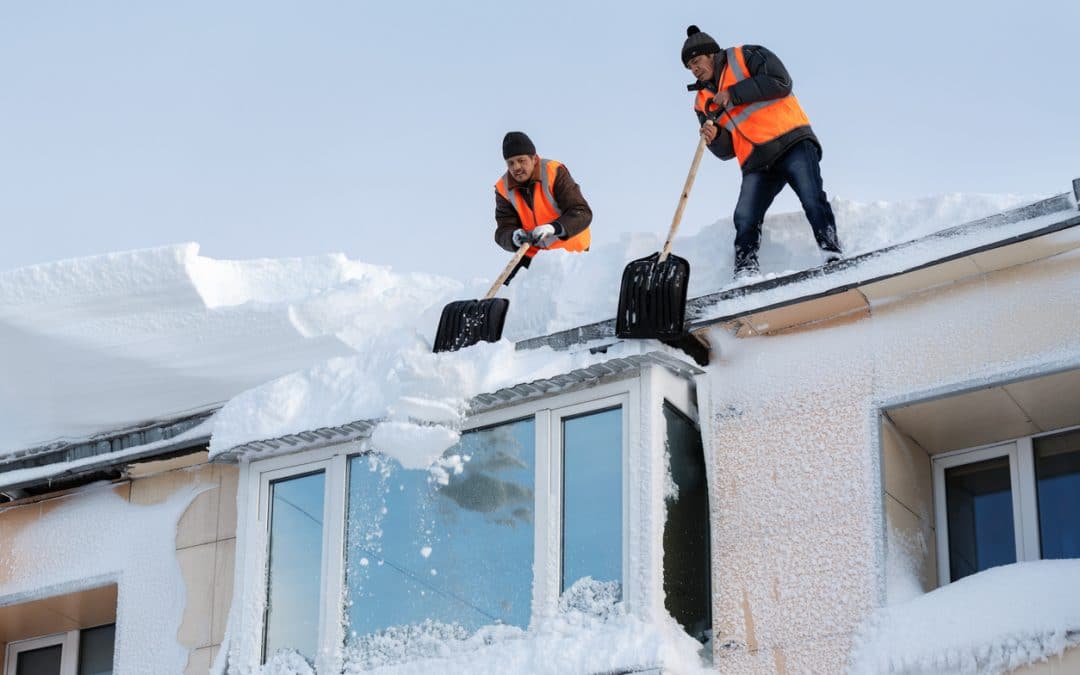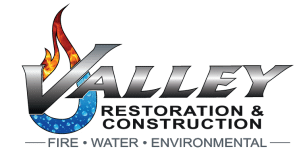
How to Remove Snow from Your Roof
It is wintertime and snow is everywhere around you. As it piles up on your roof, it puts increased pressure and weight on the frame of your house. When the snow gets too heavy, you risk losing your house stability, leading to structural problems.
To prevent that, homeowners may need to relieve their roofs from the weight and damaging effects of snow. There are several ways you can do that. The safest way is to call an experienced crew, who will come with the proper equipment to clean up your roof from the snow.
If, however, you feel you prefer to clean your roof yourself, here are a few things to remember and some tips about how to remove snow from your roof in a safe yet effective way.
What Happens If Snow Builds up on My Roof?
A winter wonderland is certainly beautiful until you look up and realize your roof is creaking under a thick layer of snow.
Most modern structures have been designed to withstand significant weights on the roofs. Depending on where you live, the building code will determine how strong your roof should be and what types of loads it can bear. Obviously, homes in Florida have different building requirements than Michigan ones.
When the snow starts piling up dangerously on your roof, it can cause your roof to bend downwards, warping it where the load is heaviest.
Ice dams are an additional danger, potentially damaging your shingles and affecting roof integrity. Ice dams build up when there is poor insulation. The heat from inside the house shifts outward through the windows and doors and melts the snow. Because of the low outside temperatures, the melted snow turns into ice and hangs from the roof.
Ice dams can damage your gutters and singles. When more snow melts, it can’t find its way down the slope of the roof because the ice dams obstruct it. Water seeps under the roof shingles and can make its way into the house.
How Much Snow Is Too Much on My Roof?
Most modern houses can bear loads on their roofs of at least 20 pounds per square foot and up to 40 pounds per square foot. Older homes, which have been built with more lenient building codes, will probably be more sensitive to heavy loads on the roof.
A crucial factor that will help you determine if you need to remove the snow from your roof is the type of snow that has fallen.
Wet snow is heavier than dry snow. While dry snow weighs approximately 5 pounds/sq. foot, wet snow can weigh as much as 20 pounds/sq. foot. Ice is even heavier than wet snow and can weigh up to 57 pounds/sq. foot.
Generally speaking, and assuming that your home has been built to current building codes, your roof should be safe with up to four feet of dry snow or two feet of wet snow. Anything over that and the structural safety of your home could be compromised.
How Do I Know If There Is Too Much Snow on My Roof?
A practical and quick test to check if the snow weight on your roof is becoming dangerous is to test your internal doors. If your door opens freely without sticking to the floor, it means your roof is OK. Likewise, your windows should open unobstructed.
If, however, they are stuck, you hear creaking sounds, or you notice cracks around your windows and doors, then you should be concerned.
How Can I Remove Snow from My Roof?
Removing snow from your roof can be tricky. Much depends on the roof’s slope. Thanks to gravity, roofs with inclinations will get rid of the snow faster than flat ones.
If you feel that too much snow has built up on your roof and you feel concerned about your home safety, you can lighten up the weight by removing snow with a snow rake.
Snow rakes are like normal rakes, except for a telescopic handle that adjusts its length. The rake itself is equipped with a rubber squeegee that acts as a soft blade on the snow.
Standing on the ground, you can start raking your roof, starting from the edges and moving inwards, as far as the length of the rake’s handle allows you.
Here are a few tips to help you when you remove snow from your roof with a snow rake.
Don’t Stand under the Rake
Make sure you don’t stand right under the rake. As you take off the snow from the roof, it will land on your head. Besides freezing, snow is heavy and could hurt you.
Where Will Snow Fall?
Calculate where the snow will fall and make sure there are no cars, people, or pets where you expect the snow to fall off the roof.
Don’t Direct Snow onto Your Gutters
Be careful not to clog your gutters with snow, as it can freeze there and obstruct water from flowing freely. This could cause a flood.
Work a Little Snow at a Time
Work a little snow at a time. Snow is heavy, so rake off small patches of snow instead of big ones. Large chunks of snow will pack and create snow so heavy that it may be impossible to rake from the ground.
Don’t Use Metal Tools
Don’t use metal tools on your roof. Metal tools can scratch and damage your shingles and other roofing material.
Don’t Rake with Heavy Winds
Avoid raking the snow with heavy winds. It could displace the snow on the roof and put your safety in danger.
Be Careful with Auxiliary Buildings
Remember that auxiliary buildings like sheds have weaker structural frames. A little weight can endanger their stability. Make sure you rake them first, if possible, and don’t attempt to climb on these buildings: your weight could overload the roof and make it collapse. For the same reason, don’t load up snow on parts of your roof located over weaker structures, such as conservatories and garages.
Don’t Climb on Ladders
Slippery conditions and ladders don’t go well together. Don’t try to carry your snow rake up on a ladder to reach your roof. You could slip on icy rungs or fall off the ladder while maneuvering the rake. If you can’t reach deep enough with a rake, it is time to call a professional crew.
You Don’t Have To Rake All the Snow off Your Roof
Your roof has been constructed to bear substantial weight. You don’t have to rake all the snow off the roof, just the excess so that you lighten up the overall weight.
Also, you don’t want to rake directly on your roof’s shingles, or you could damage them. A couple of inches of snow on your roof won’t cause any damage.
Watch the Weather Forecast
Before you decide on clearing snow off your roof, take a look at the weather forecast. If more snow is predicted and you are already concerned about the existing snow on your roof, then it’s best if you take the existing load off your roof. If you don’t, more will build up and you will find it even more difficult to rake it, not to mention that it could eventually endanger your home’s stability.
On the other hand, if the weather forecast predicts warmer weather, perhaps you can wait for nature to melt the snow as long as you don’t have any signs of impending danger.
What If Clearing My Roof of Snow Is Too Much for Me?
Clearing your roof can be exhausting and even dangerous. If you feel that a simple raking technique won’t do it, contact a professional snow cleaning crew who will come with the proper equipment and know-how.
After the snow has melted, take a look at your roof and ensure that all the shingles are intact, the gutters are clear of debris, and the whole house is safe from rain coming in. Follow these tips to protect your home from ice damage and learn how to winter-proof your home.
Should you need help with clearing the snow off your roof, have a water emergency, or need water damage mitigation, contact us at 970-964-4437 or contact Valley Restoration and Construction. We are available 24/7 and we will be there to restore your home.

